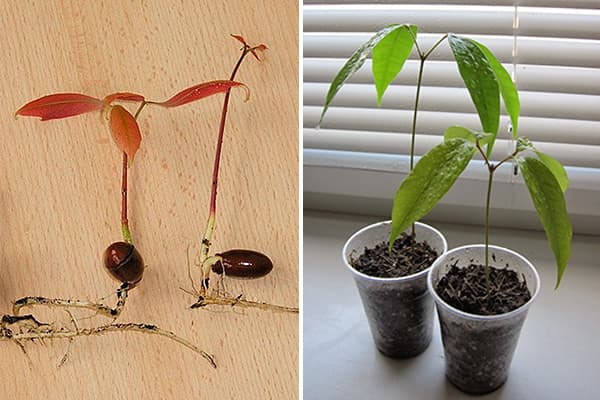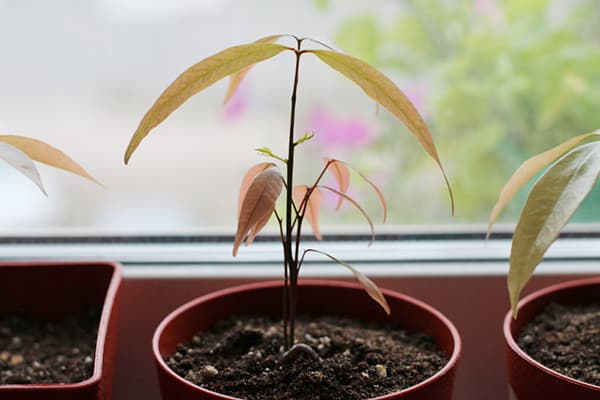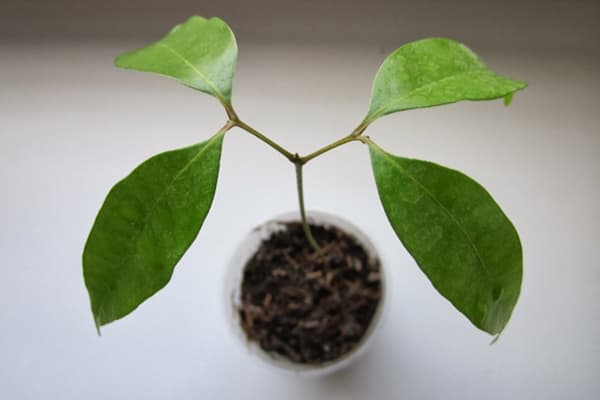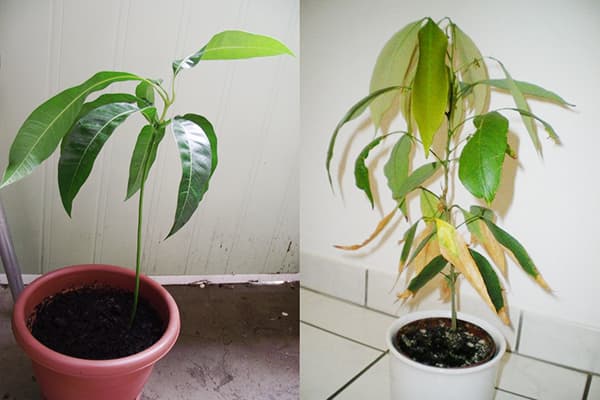How to grow a tree from a lychee seed?
Lychee is recognized as one of the most beautiful plants on the planet and is highly valued as an ornamental crop. It is not surprising that many are tempted by the idea of growing lychees from seeds. But at home, the tree grows with difficulty and often dies in the first year. Once upon a time, Emperor Wu Di executed all his gardeners because they could not transport and adapt this demanding plant from Southern China to Northern China. Lychee needs not only special care and fertile soil, but also mycorrhizal fungi, thanks to which the tree feeds.

Instructions for germinating seeds
It is quite easy to germinate a lychee seed. If the fruits are fresh, germination is 90–100%. However, it is worth considering the fact that it rapidly decreases after eating the pulp. Cleaned seeds are suitable for planting for about 2-3 days.
So what should you do?
- Soak the seeds in warm water for a day (you can skip this step).
- Prepare 0.3 liter pots for each seed. There must be holes and drainage at the bottom that will protect the seedlings from waterlogging.
- Fill the pots with citrus soil. You can buy it in a specialized store or make a suitable soil mixture yourself from 2 parts of turf soil, 2 parts of leaf soil, 2 parts of humus and 1 part of coarse river sand. It is advisable to mix hydrogel into the substrate and, of course, mycorrhiza-forming spores.
- Plant the seeds horizontally, flat side down.The roots appear on the same side as the stems - where the cut is located.
- Water the soil around the perimeter with warm, settled water.
- Cover the pots with film or, even better, install a ventilated greenhouse.
- Place the lychees in a warm place and wait until the first shoots appear. After this, the film must be removed.
Many people place pots of lychee seeds near the battery or on the computer system unit. On average, seedlings appear on the 10–30th day from the start of planting. The warmer the soil and the higher the humidity, the faster the seeds can germinate.
As practice shows, out of 10 lychee seedlings, only 4 have enough vitality for good growth. Therefore, it is recommended to germinate several seeds at once so that the strongest sprouts can be selected.
Features of indoor lychee
The capricious lychee loves fertile soil rich in humus. It grows best in its homeland, in a subtropical climate with fairly cool winters. This is one of the few plant species that require mycorrhiza to exist - a symbiosis of roots with fungi. Rhizophagus litch mushrooms seem to replace suction roots - the area of the suction surface with them increases by about 100 times. But since Rhizophagus litch is not cultivated, many people replace it with Rhizophagus irregularis spores, which can be purchased relatively easily and inexpensively on eBay.
Also, sometimes they try to replace mycorrhiza with mushrooms from the soil under coniferous trees, but in most cases this does not help.
The lychee seedling develops well as long as it receives nutrients from the seed. On average, this period is 4–5 months. Then, if mycorrhiza-forming fungi have not been introduced into the soil, the roots begin to starve. Without symbiosis, the plant cannot feed.
Seedling care
In order for a strong and healthy tree to grow from a seed, it is necessary to organize proper care for the seedlings. Lychee is not a plant that grows on its own.
- Watering.
The indoor lychee tree is very sensitive to both excess and lack of moisture. In nature, the summer months include the rainy season, which occurs constantly. In greenhouses, lychees are sprayed by automatic machines every half hour. At home, in the heat, the plant is watered every day, but at the same time make sure that there is no stagnation of moisture. In winter, watering is reduced to 2-3 times a week. Be sure to keep the lychee roots warm. Water for irrigation is used that is settled and warm.
- Lighting.
The plant needs at least 12 hours of daylight, but it must be protected from direct sunlight. Lychees can be safely grown on a south-facing window or arranged in a special place illuminated by a 100 W phytolamp.
- Temperature.
Lychee requires seasonal changes in air temperature. In summer the indicator should be between 23–33 degrees, in winter – 15–18 degrees. Wintering in cool conditions gives impetus to the flowering of a mature tree (in the 8th–10th year).
- Feeding.
In the first year, fertilizers should be applied no more than once every 4–5 months, then once every 1–3 months.
Phosphorus-containing preparations should not be used in the first 4–6 weeks after introducing fungal spores into the soil. This time is necessary for the formation of stable mycorrhiza.
Lychee takes well to organic matter (rotted manure, compost), biological product "Baikal", mineral fertilizers.
- Trimming.
It is carried out in the first 2 years in order to form the crown.
- Transfer.
When the growth is 20–25 cm, lychees are transplanted into a larger pot.
At first, the exotic tree grows very well and quickly.Already in the first few months, its height can reach 20 cm. However, then the growth rate usually decreases. A two-year-old lychee rarely exceeds 35 cm. In general, at home you can grow a tree up to 2.5 m and even make it bear fruit.
Lychee is a heat-loving, capricious plant. In open ground it grows in the subtropics. It is quite difficult to create similar conditions in an apartment or house. And although the seed almost always germinates without problems, in the future you will have to put in a lot of effort so that the sprout does not die. The tree is sensitive to changes in its contents and can lose all its leaves. With a lack of light and nutrition, it grows faded. When there is an excess of moisture in the soil, the foliage turns brown.
Only in the 4th–5th year does the plant become less picky. But, despite all the difficulties, many are engaged in growing lychee. The tree is beautiful, original and looks stylish in any room!


